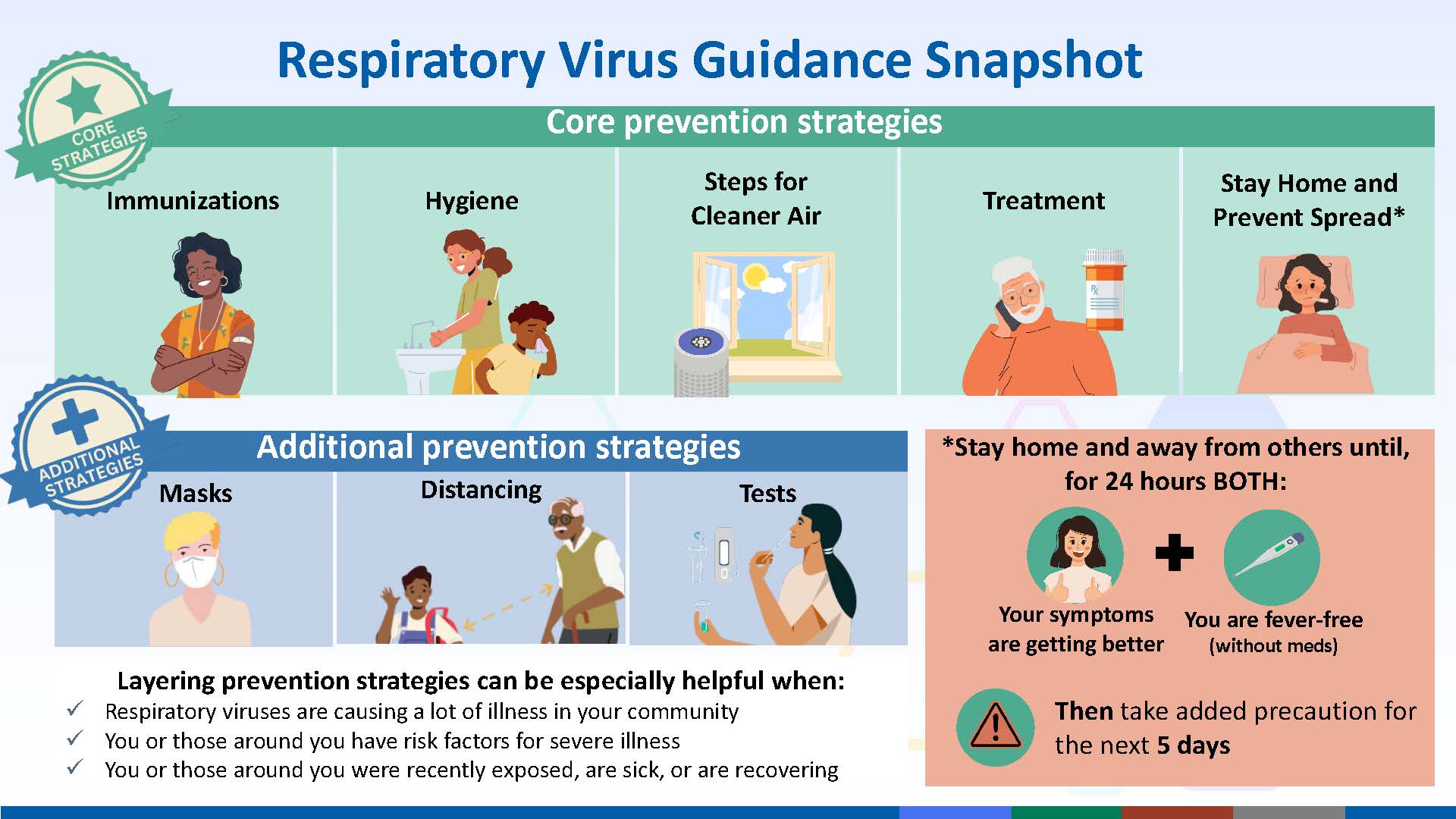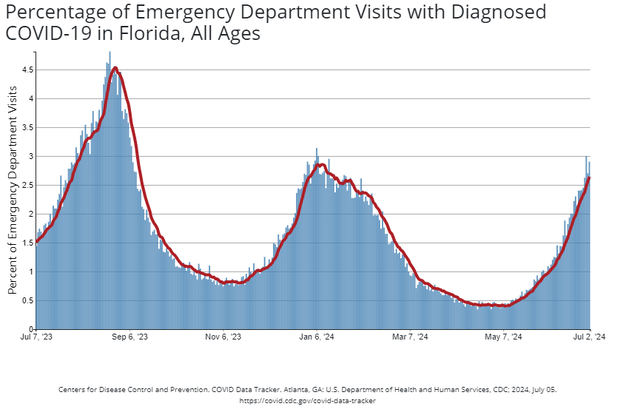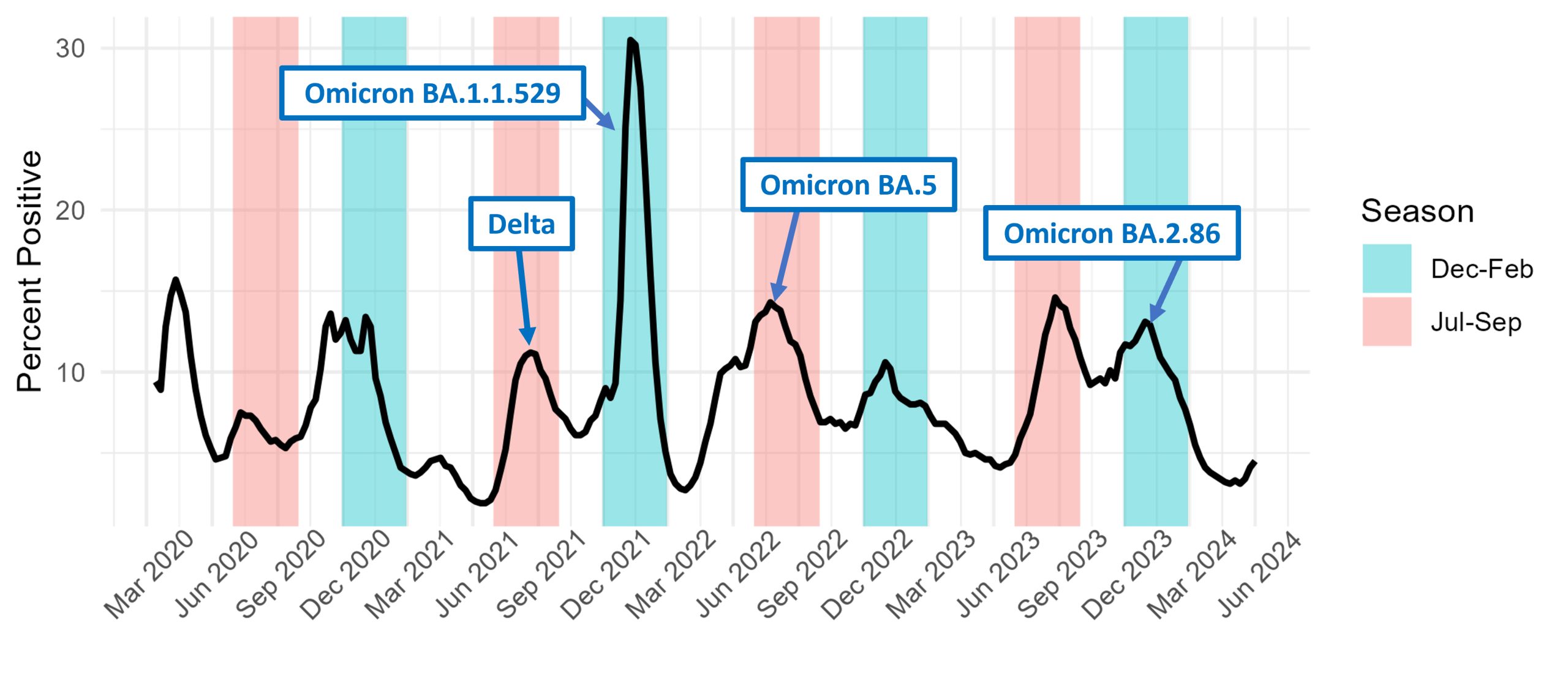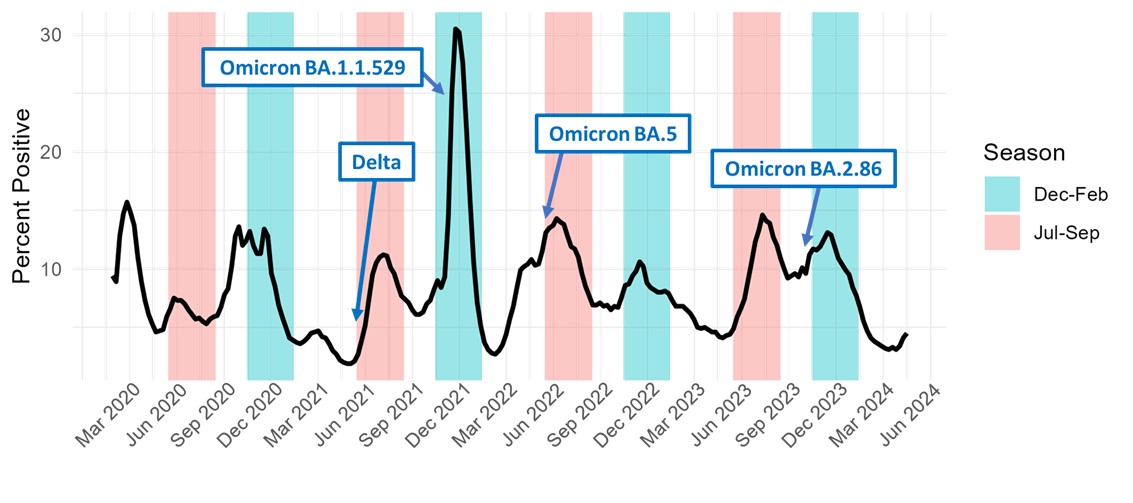
COVID-19 Surge in Summer: A Look at the Latest Data and Developments
The Centers for Disease Control and Prevention (CDC) has reported a surge in COVID-19 cases, hospitalizations, and deaths across the United States during the summer months. In this article, we will examine recent data from various sources to provide an overview of the current state of the pandemic.
Florida Sees Increase in Emergency Room Patients with COVID-19
According to CDC data, Florida has seen a significant increase in emergency room patients with COVID-19. The weekly average of such patients reached 2.64% as of July 6, 2024, which is among the highest figures recorded during this summer's wave.
CDC data also shows that rates of emergency room patients with COVID-19 in Florida have surged and are now near peaks not seen since the worst days of last winter's wave. Additionally, trends from Florida have been echoed in some western states, where COVID-19 emergency room visits appear to have peaked after recording high rates of patients.
COVID-19 Can Surge Throughout the Year
The CDC has reported that COVID-19 activity tends to fluctuate with the seasons, meaning it has some seasonal patterns with winter and summer peaks. This is due to several factors, including environmental conditions, human behaviors, and decreasing immunity from previous infections and vaccinations.
New Variants Contributing to Summer Surges
Two new variants of SARS-CoV-2, KP.3 and LB.1, have been identified as contributing factors to the summer surge in COVID-19 cases. These variants share a common ancestor in the JN.1 strain that caused a wave of cases last winter.
Staying Protected from Serious Illness
To protect yourself from serious illness, it is recommended to stay up to date with vaccinations against COVID-19. If you develop symptoms or have been exposed, experts recommend taking a Covid test as soon as possible and following any necessary treatment guidelines.
Conclusion
The summer of 2024 has seen a surge in COVID-19 cases, hospitalizations, and deaths across the United States. The CDC reports that no states or territories are seeing a slowdown in infections this past week. Key virus indicators appear to be worsening fastest across several western states, where trends first began climbing this month.
Two new variants of SARS-CoV-2, KP.3 and LB.1, have been identified as contributing factors to the summer surge in COVID-19 cases. It is important for individuals to stay informed about the latest developments and take necessary precautions to protect themselves from serious illness.






